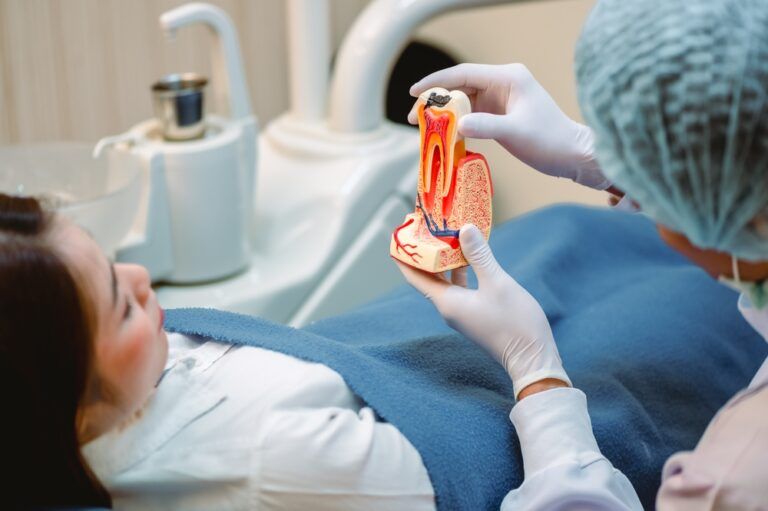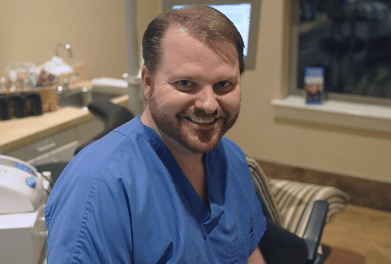Facing a root canal treatment can be daunting, especially if you don’t know what to expect. This blog aims to demystify the procedure, explain when it is needed, and provide reassurance to patients who may undergo a root canal treatment soon.
What Is Root Canal Treatment?
Root canal treatment, also known as endodontic therapy, is a dental procedure used to treat infection at the center of a tooth (the root canal system). It is necessary when the pulp, which is composed of nerves and blood vessels inside the tooth, becomes infected or damaged.
The pulp can become infected for several reasons, including:
- Deep decay due to an untreated cavity.
- Multiple dental procedures on the tooth.
- A chip or crack in the tooth.
- Trauma to the face.
When the pulp becomes infected or inflamed, it can cause severe pain, swelling, and even lead to an abscess if left untreated. Root canal treatment helps save the tooth, alleviate pain, and prevent further complications.
The Need for Root Canal Treatment
Recognizing when you need a root canal treatment is essential for maintaining dental health. Here are common signs that might indicate the need for this procedure:
- Persistent Pain. One of the most apparent signs is persistent tooth pain. If you experience severe toothache, especially when chewing or applying pressure, it might indicate that the pulp is infected.
- Sensitivity to Heat and Cold. If your tooth is highly sensitive to hot or cold foods and drinks, and the pain lingers even after the temperature stimulus is removed, it could be a sign that the nerves and blood vessels in the pulp are damaged.
- Swollen Gums. Swelling around the affected tooth can indicate an infection in the pulp. You might notice tender, swollen gums or a small pimple-like bump on the gums, which can be a sign of an abscess.
- Discoloration. A tooth that has become darker or discolored may suggest that the pulp has died or is dying. This discoloration happens because of the breakdown of internal tissues, often requiring root canal treatment to address the issue.
- Prolonged Sensitivity. Pain that persists long after the cause has been removed (such as lingering pain after eating something hot or cold) can indicate damage to the tooth’s pulp.
The Root Canal Procedure
Understanding the procedure can help ease any anxiety. Here is a step-by-step outline of what to expect during root canal treatment:
Step 1: Consultation and Diagnosis. The process begins with a consultation and examination by your dentist or endodontist. They will take X-rays to assess the extent of the damage and plan the treatment.
Step 2: Local Anesthesia. Before the procedure starts, your dentist will administer local anesthesia to numb the affected tooth and surrounding area. This ensures that you remain comfortable and pain-free throughout the treatment.
Step 3: Removing the Infected Pulp. The dentist will place a rubber dam around the tooth to keep it dry and free from saliva. They will then create an opening in the crown of the tooth to access the infected pulp. Using specialized tools, the dentist will carefully remove the infected or damaged pulp.
Step 4: Cleaning and Shaping the Root Canals. Once the pulp is removed, the dentist will clean and disinfect the root canals to remove any remaining bacteria. They will also shape the canals to prepare them for filling.
Step 5: Filling the Canals. After cleaning, the dentist will fill the root canals with a biocompatible material called gutta-percha. This material seals the canals and prevents future infections.
Step 6: Sealing the Tooth. In some cases, a temporary filling is placed to protect the tooth until a permanent crown can be made. Your dentist will discuss whether you need a temporary filling or a permanent restoration immediately.
Step 7: Restoring the Tooth. The final step involves restoring the tooth with a crown or filling to protect it and restore its function. This is crucial to prevent the tooth from fracturing.
Recovery and Aftercare
After the procedure, it’s normal to experience some discomfort and sensitivity, which can be managed with over-the-counter pain relievers. Your dentist will provide specific aftercare instructions, including maintaining good oral hygiene and avoiding chewing on the treated tooth until it is fully restored. Regular dental check-ups and cleanings are essential to ensure the success of the root canal treatment and maintain overall oral health.
Root canal treatment is a common, effective procedure to save teeth that would otherwise need to be extracted due to infection or damage. Understanding the process and recognizing the signs that indicate you might need a root canal can help alleviate anxiety and ensure timely treatment. If you’re experiencing symptoms or have concerns about your dental health, consult with your dentist to determine the best course of action.
Waco Dental Is Your Dental Care Provider
For patients seeking a family dentist, Dr. Martin can do it all: crowns, bridges, veneers, dental implants, root canals, extractions, dentures, and Invisalign–so you rarely will ever have to be referred to a specialist. For cosmetic and restorative services at Waco Dental, as well as twice-a-year exams and cleaning, call and schedule an appointment today at 254-754-3505.

